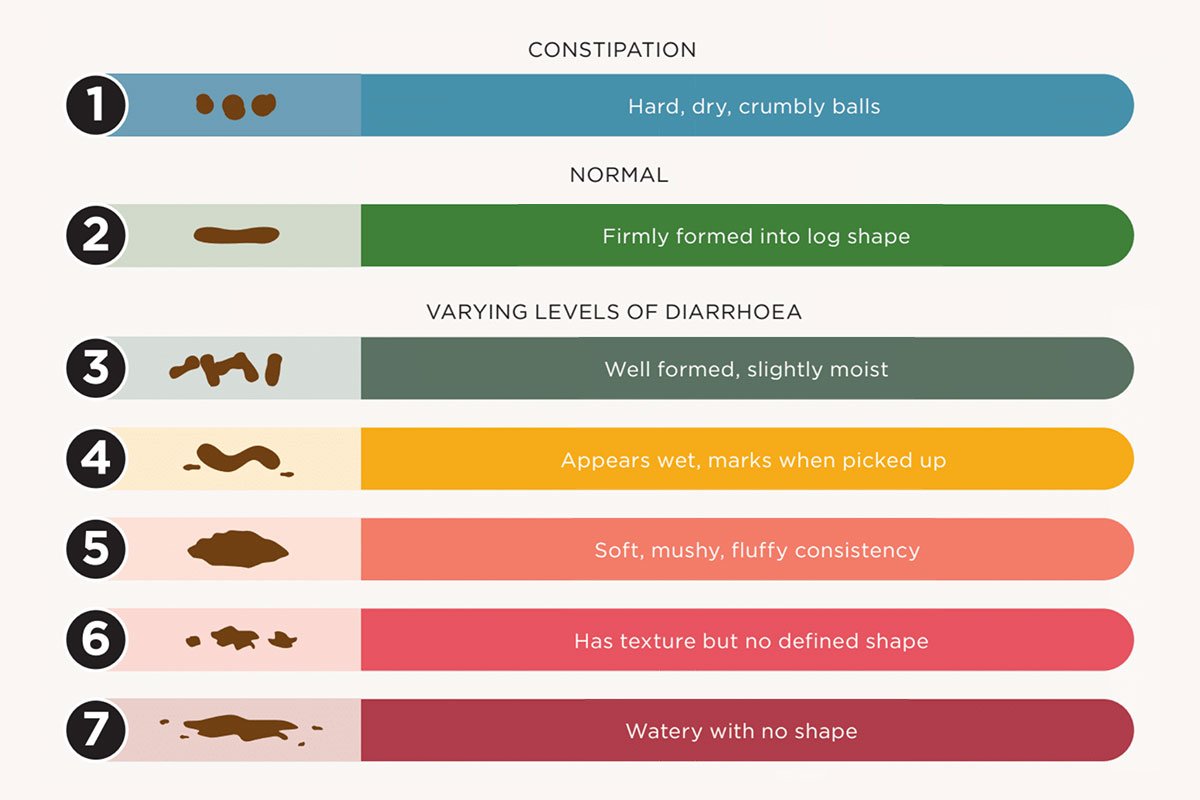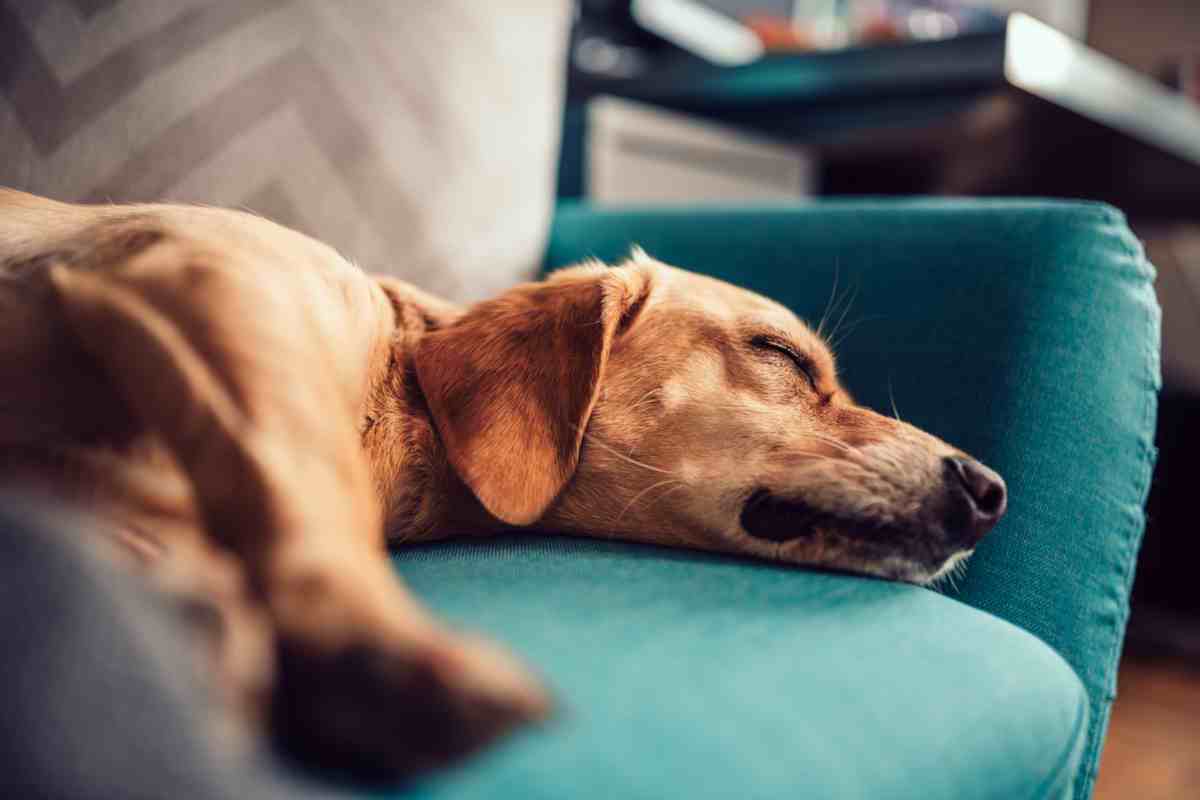Although it may be an off-putting subject, learning about your pet's poop is an important way of looking after their health, says vet Joanna Woodnutt.
As a dog owner, or if you have a cat that uses the litter tray, you're probably more than familiar with your pet's poo. This is important to help you identify when their poo is abnormal, and can give you valuable insight as to what's going on inside their bodies.
What is a normal cat or dog poo?
Your pet's poo should be firmly formed into a log shape. It should be slightly segmented in appearance, but not fully separated into chunks. It should be easy to pick up, and not too sticky, so that it doesn't leave a 'residue' on the ground.
Pets have something similar to the Bristol Stool Chart – aka a dog poop chart – which labels each poop on a score of 1-7, depending on its firmness. Normal, healthy dog poop are a score 2. Any score higher than 2 indicates varying levels of diarrhoea, whilst a '1' indicates constipation.
Dog poop chart

Pets have something similar to the Bristol Stool Chart - aka a dog poop chart.
When is my pet's poo not normal?
Constipation in pets
Any poos that are harder than normal are considered constipated (score 1). Constipated stools may be darker than usual and are broken into hard, dry, crumbly balls.
Constipation can be caused if the stool moves too slowly through the digestive system due to an upset. It may also be caused by diseases that cause chronic dehydration, such as kidney disease – especially in cats. I've also seen constipation in pets that refuse to toilet because 'assuming the position' is too uncomfortable, due to arthritis or spinal pain.
Diarrhoea in dogs and cats
'Normal' diarrhoea is anything softer than a score 2 poop, varying in appearance between simply unformed to a 'muddy puddle'. It can be acute (meaning it comes on quickly due to an upset) or chronic, usually due to an underlying health complaint such as food intolerance. 'Normal' diarrhoea is brown to pale brown in colour – so pay particular attention to other colours.
Coloured poop
Orange or yellow dog poop
Orange or yellow dog poop can simply be down to food dyes, but if faeces are regularly unformed and orange-yellow, especially if they're stinky, you should investigate. Exocrine Pancreatic Insufficiency and liver disease are both worries with orange poop.
Blood in dog poop
If you notice red streaks in your pet's poop, there are a couple of possibilities. Whilst one streak may just indicate that the rectum has been damaged (usually due to straining), more than a single streak suggests a more serious problem, so do get in contact with your vet.
Mucus in dog poop
Any colour of diarrhoea can also be accompanied by 'jelly' (or mucus) which suggests your pet's diarrhoea is starting lower down his digestive tract, in his colon (colitis). This isn't anything to panic about, but does suggest your pet may need some symptomatic relief, or further investigation.
Black dog poop
Black and tarry cat or dog poo is a sign of intestinal bleeding and may require urgent investigation. This may be due to a tumour or foreign body, although it can be normal after an extremely bloody or meaty meal.
How to help your pet with an upset stomach
If your pet has a mild upset stomach, it can usually be managed effectively at home – although the advice is no longer to starve dogs or cats when they have diarrhoea, as this can damage the gut further. A home-cooked bland diet has also fallen out of fashion, as it's deficient in many essential nutrients and puts your pet under further strain.

Feed a poorly pet a small amount of their normal food at regular intervals, as well as plenty of water.
Instead, feed a small amount of your pet's normal diet (or a tinned diet specifically formulated to deal with stomach upsets), little and often. Adding in probiotics to replace the normal gut flora can help your dog to recover faster from a stomach upset, and you will want to make sure your pet drinks plenty to keep hydrated. Consider adding water from boiling a piece of chicken as a more tempting alternative to plain water. You can also add extra water to their food.
If you're worried about your pet, a visit to the vet is usually best – especially if they have diarrhoea that persists for more than two days or is accompanied by vomiting or lethargy. You should also visit the vet if your pet's diarrhoea is recurrent, even if they get better in between.







